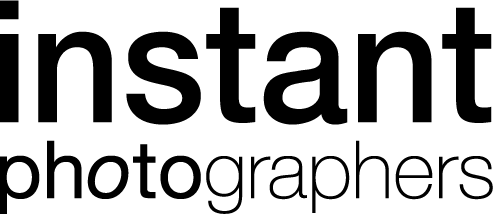

Carmen De Vos, Belgian photographer, will not go unnoticed if you are regulars of our social networks, nor of the many various exhibitions that we have held or sponsored around the world, and in which she always amazes with taking her photography to the limit. In the instant format, Carmen is very famous for her direct, sensual, sometimes shocking images, in which she or her models play a private, intimate role, essential in instant photography. Today we have the pleasure of sharing with you a little more about her version of the world through photography.
IP: Carmen, we have heard several times your style of photography being called “Slow photography”, because of that instant care, which seems to impact your scenes, and the personal narrative, which seems to be in every detail. Does it seem right to be labeled as a kind of a watchmaker in photography?
In instant photography I do like to plan every detail in the decor. I do not point and shoot as I don’t want to spoil the film. So I think up in advance what I want to do, then I horde the props, find some wallpaper and get started. In this genre I also direct the model with detailed instructions. ‘Put some more drama in your ass!’ or ‘Chin a mili-fraction to the left, please’ or ‘Look at me as if we just made love’.
When everything is finally right, I shoot. And then I notice that I didn’t put the film in the camera.


IP: Do you define the artistic part of the commercial in your work? Or do you consider that everything in your style is connected by a thread?
I am not really a commercial photographer, but I do shoot portraits for the Belgian press. The more time the person gives me, the more I can put my vision into the portrait. It helps when the portrayed person is playful and confident.


IP: Is human contact essential in your portraits, how important is it to connect with the model in your photography?
It is THE most important element. It is all about the people. I am a storyteller as well as a photographer and my stories are about people.
I feel that the connection with others and the biological reactions we experience in human contact are as important as the chemistry in our films. They are flawed as well, but I’ve learned that exactly there lies the beauty. On rare occasions, I do not manage to connect with the person in front of me. This will distress me and leave me with a bunch of portraits I will never love.


IP: Do you consider Kitsch essential in instant photography?
Instant photography cannot pride itself on crispness or accurate colors, so we are obliged to enlarge the story we want to tell. Instant photography screams for poetry, drama and kitsch. I specialize in the last two.


IP: How important is it to experiment in your photography?
Less important than it used to be. I can be happy now with just having a good result. But not for too long, mind you. Perfect photos tend to bore me, one might as well look through the window and see all the beauty there. When I start to feel like my photos become views from the window, I need to destroy something in order to attract my interest again or to make it more relevant.


IP: How did your passion for instant photography begin and what was the rise to this point, when have you become one of the flagship photographers of the format?
I fell in love with the Polaroid when I joined Polanoid. About fifteen years ago. All of a sudden I found myself surrounded by people from the internet who had the same passion for deformed and off colored photos as I did. Polanoid was a warm community in which the experiment was encouraged and praised high. At a certain point Florian Kaps asked me if I didn’t feel like running an erotic Polaroid Magazine. I’d never done anything like that before, so I said yes. We made TicKL from scratch with the help of an international flock of enthusiastic instant photographers who loathed the phony digital photography and its endless post-processing possibilities as much as we did.
We tried to be authentic. And sexy.
That’s the point when the Belgian press discovered my work and asked me to start taking Polaroid portraits for them, which I did for a long time before switching to digital.
I still am very grateful for all these opportunities.


IP: Do you consider that there is generally little risk in portrait photography?
Not at all. The internet is full with bad portraiture. It takes a certain skill to be able to read the person in front of you and project the quality you see in them, to your photo.


IP: What advice would you give to photographers starting their career in the world of instant photography?
I’m not sure if I am the best person to give advice. I have been very lucky. I feel that there are much better photographers than I am who receive less attention.
But this I can say: work hard, persist in what you like, recognize & grab the opportunities that are given to you.
Look for opportunities yourself. Share what you do. Do not be scared to be afraid. Fear is a fuel that makes you awake, it should not paralyze you. Don’t be content too easily.








All pictures are a part of the book The Eyes of the Fox, 2018
